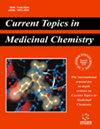阿尔茨海默病治疗和管理的最新进展:精准医学视角
IF 2.9
4区 医学
Q3 CHEMISTRY, MEDICINAL
Current topics in medicinal chemistry
Pub Date : 2024-04-03
DOI:10.2174/0115680266299847240328045737
引用次数: 0
摘要
:大约 60% 到 70% 的痴呆症患者患有阿尔茨海默病(AD),这是一种神经退行性疾病。导致这种疾病的原因之一是人脑中天然存在的蛋白质发生了错误折叠,特别是β-淀粉样蛋白(Aβ)和tau。某些诊断成像技术,如淀粉样蛋白 PET 成像、tau PET 成像、磁共振成像(MRI)、计算机断层扫描(CT)等,可以检测血液、血浆和脑脊液中的生物标志物,如β-淀粉样蛋白、斑块和缠结水平的增加。为了开发治疗阿尔茨海默病的新药物,研究人员必须对淀粉样蛋白β错误折叠及其他相关方面有全面而详细的了解。多洛哌齐、利伐斯的明、加兰他敏和其他乙酰胆碱酯酶抑制剂都是目前用于治疗阿尔茨海默病的药物。另一种可以暂时缓解痴呆症状的药物是美金刚,它可以阻断 N-甲基-D-天冬氨酸(NMDA)受体。但是,它并不能阻止或重新逆转疾病的发展。目前市场上的药物只能阻止疾病的发展,而不能逆转。最近,人们开发了一些干预措施,以缓解行为和心理症状,显示抗神经炎症和抗Tau效应,诱导神经递质改变和认知能力增强,并提供其他靶点。对于一些阿尔茨海默氏症患者来说,美国食品及药物管理局批准的单克隆抗体阿杜单抗(aducanumab)是一种选择;对于其他患者来说,莱卡尼单抗(lecanemab)和多那尼单抗(donanemab)等药物正在进行第三阶段临床研究,这些药物在消除淀粉样蛋白方面具有明显的潜力。然而,还需要进行更多的研究来确定和解决这些局限性,以减少副作用的可能性,最大限度地提高治疗效果。本文章由计算机程序翻译,如有差异,请以英文原文为准。
Recent Advances in the Treatment and Management of Alzheimer’s Disease: A Precision Medicine Perspective
: About 60% to 70% of people with dementia have Alzheimer's Disease (AD), a neuro-degenerative illness. One reason for this disorder is the misfolding of naturally occurring proteins in the human brain, specifically β-amyloid (Aβ) and tau. Certain diagnostic imaging techniques, such as amyloid PET imaging, tau PET imaging, Magnetic Resonance Imaging (MRI), Comput-erized Tomography (CT), and others, can detect biomarkers in blood, plasma, and cerebral spinal fluids, like an increased level of β-amyloid, plaques, and tangles. In order to create new pharma-cotherapeutics for Alzheimer's disease, researchers must have a thorough and detailed knowledge of amyloid beta misfolding and other related aspects. Dolopezil, rivastigmine, galantamine, and other acetylcholinesterase inhibitors are among the medications now used to treat Alzheimer's disease. Another medication that can temporarily alleviate dementia symptoms is memantine, which blocks the N-methyl-D-aspartate (NMDA) receptor. However, it is not able to halt or re-verse the progression of the disease. Medication now on the market can only halt its advance-ment, not reverse it. Interventions to alleviate behavioral and psychological symptoms, exhibit an-ti-neuroinflammation and anti-tau effects, induce neurotransmitter alteration and cognitive en-hancement, and provide other targets have recently been developed. For some Alzheimer's pa-tients, the FDA-approved monoclonal antibody, aducanumab, is an option; for others, phase 3 clinical studies are underway for drugs, like lecanemab and donanemab, which have demonstrat-ed potential in eliminating amyloid protein. However, additional study is required to identify and address these limitations in order to reduce the likelihood of side effects and maximize the thera-peutic efficacy.
求助全文
通过发布文献求助,成功后即可免费获取论文全文。
去求助
来源期刊
CiteScore
6.40
自引率
2.90%
发文量
186
审稿时长
3-8 weeks
期刊介绍:
Current Topics in Medicinal Chemistry is a forum for the review of areas of keen and topical interest to medicinal chemists and others in the allied disciplines. Each issue is solely devoted to a specific topic, containing six to nine reviews, which provide the reader a comprehensive survey of that area. A Guest Editor who is an expert in the topic under review, will assemble each issue. The scope of Current Topics in Medicinal Chemistry will cover all areas of medicinal chemistry, including current developments in rational drug design, synthetic chemistry, bioorganic chemistry, high-throughput screening, combinatorial chemistry, compound diversity measurements, drug absorption, drug distribution, metabolism, new and emerging drug targets, natural products, pharmacogenomics, and structure-activity relationships. Medicinal chemistry is a rapidly maturing discipline. The study of how structure and function are related is absolutely essential to understanding the molecular basis of life. Current Topics in Medicinal Chemistry aims to contribute to the growth of scientific knowledge and insight, and facilitate the discovery and development of new therapeutic agents to treat debilitating human disorders. The journal is essential for every medicinal chemist who wishes to be kept informed and up-to-date with the latest and most important advances.

 求助内容:
求助内容: 应助结果提醒方式:
应助结果提醒方式:


